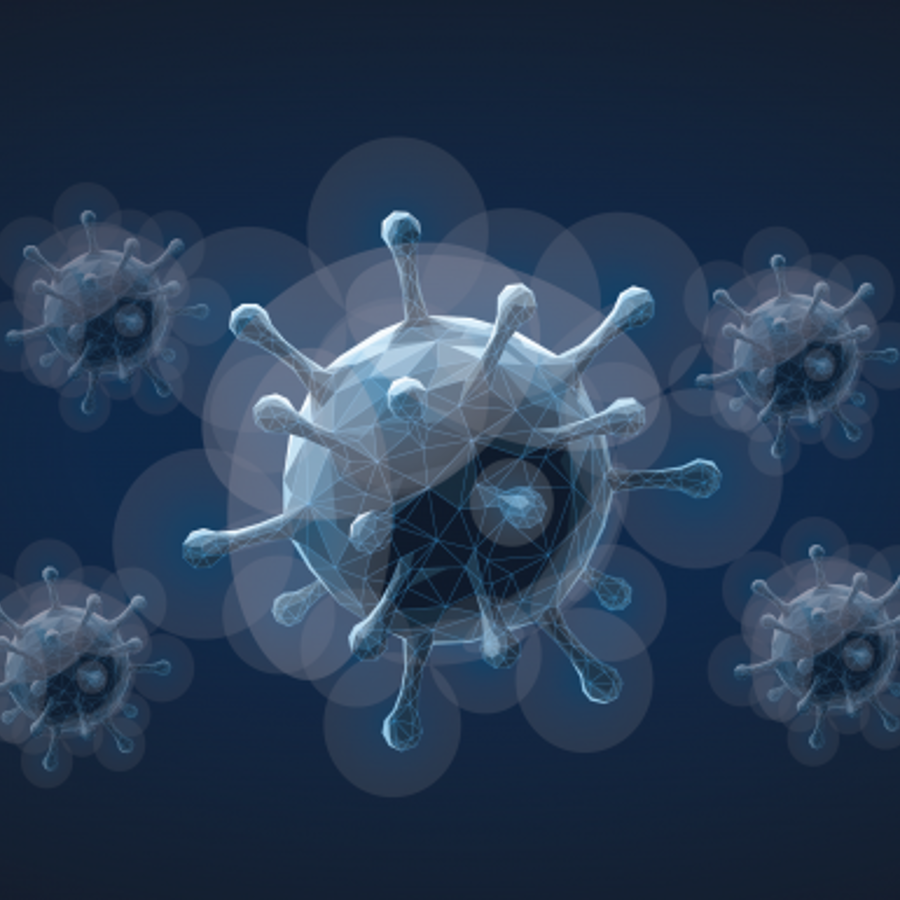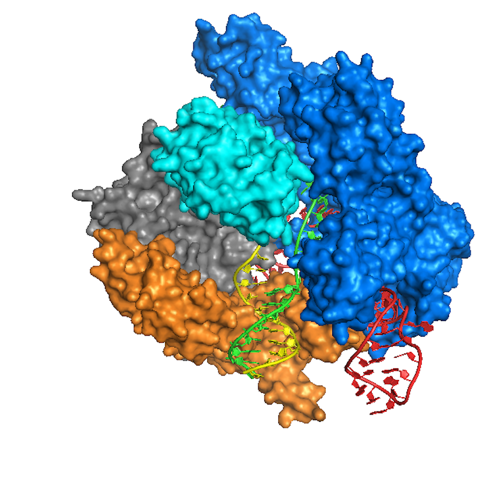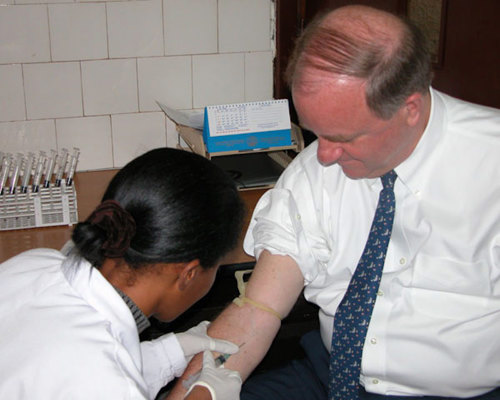
Would it be possible to make a virus that attacks other viruses?
May 17, 2016

- Related Topics:
- Genetic engineering,
- Gene therapy,
- Futuristic science,
- CRISPR
A high school student from Ghana asks:
"Would it be possible to make a virus that attacks other viruses? Kind of like how our T cells do?"
We can’t make a virus that works like our immune system. But we just might be able to make one that works a bit like the immune system in some bacteria. This system is called CRISPR.
Bacteria basically use a very simple immune system that finds the DNA of viruses and cuts it into pieces. When the viral DNA is cut, the virus can’t make new viruses. It is dead.
But this system wouldn’t work on viruses floating around in the environment. For reasons that you’ll see below, this would only work on cells infected with the virus.
So your killer virus would have to kill viruses by infecting a cell that already has that virus. Now that person is cured! Or is she?
It turns out it is really hard to kill all the virus in a person. Viruses change their DNA a lot. This means that a few copies of the virus will not have the DNA your killer virus goes after.
Those few will not be killed, and now they are free to make new viruses causing the infection again. You slowed the virus down but didn’t kill it.
One way to get around this problem is to make lots of killer viruses that attack different parts of the virus’ DNA. The chances of a virus not being killed by three or four killer viruses are pretty close to zero.
This is how current treatments for AIDS work. Patients take three different drugs to keep the virus that causes AIDS, HIV, down because it is unlikely that there will be a virus that can get by all three.
For the rest of the answer I thought I’d describe how such a system might work. As you’ll see, it works because CRISPR can fit into a cramped virus.

CRISPR/Cas is a Bacterial Immune System
CRISPR/Cas is one way that bacteria can fight off viruses. To work, the system needs to:
- Find the virus’ DNA
- Cut up the virus’ DNA
To find the virus’s DNA, the CRISPR/Cas system uses an RNA called, appropriately, the guide RNA. This RNA includes 18 bases that are in the virus.
The guide RNA travels through the cell looking for a DNA that has those 18 bases. To get the CRISPR/Cas system working, the DNA and RNA must match at all 18 bases (click here to see how this matching works). If they don’t match, the RNA will keep looking.
This is important because if the RNA matches any DNA in the bacteria or patient, then CRISPR/Cas will cut that DNA too. This can mess up the bacterial or patient’s DNA causing problems.
This is also why the length of the guide RNA is so important. With 18 bases, the odds are pretty good that the same DNA won’t also happen in the DNA of the bacteria or the patient.
If, for example, the RNA were only 5 bases long, some could match more than 10 million times in a patient’s DNA! Death by millions of DNA cuts…
Once CRISPR/Cas finds a DNA that matches at all 18 bases, the Cas part will then cut up the viral DNA. This cutting kills the virus.

So, all you need in your killer virus is the code for the Cas protein and the code for the RNA that targets your virus! This will fit nicely into even the teensiest of viruses.
Mutating Viruses
Unfortunately, that killer virus we just let loose won’t do the job on its own. A few of the viruses it is going after will slip through because of the high mutation rate of these viruses.
A virus must copy its DNA to make a new virus. The virus must copy itself many, many times to spread to many cells in the body and many people.
Every time a virus copies itself, it makes a few mistakes. Many of these mistakes are bad but losing these viruses is OK because there are so many left.
These mistakes can help a virus get past our killer virus (and the body’s immune system). This is why we need to make three or so killer viruses. Or at least put three different guide RNAs in the same killer virus.
It is unlikely that any virus will have the mutations or mistakes that let it avoid all three. Using three killer viruses, we are more likely to kill all of the virus and cure the person!
Using Viruses to Cure Diseases
In some ways, a form of killer viruses are being used in real life!
For some diseases, such as sickle cell anemia or cystic fibrosis, we know that there is just one gene that causes all of the problems. It has a mistake in it that we can’t fix (at least not right now).
What if we could get a fixed copy of that gene into the cells that need it? Scientists are working on this right now and are using viruses to deliver the fixed gene.
The viruses already know how to get into the cells. All we have to do is add the gene to them that the cell needs!
This is called gene therapy and is being tried to treat a variety of different diseases. It isn’t working quite yet but we are getting very close.

Using CRISPR to Attack Viruses
Scientists are also trying to use CRISPR (the same thing in our killer virus) to treat viral diseases in humans, such as HIV, the virus that causes AIDS. One way to do this is to add this weapon to our own immune system.
T cells are an important part of our immune system. They normally travel through the body and recognize cells that are infected by viruses.
HIV is especially nasty because it gets into and destroys these T cells. This is why people with AIDS have such a weak immune system — most of their T cells are destroyed.
The idea is to add a CRISPR/Cas system to someone’s T cells. This system would find and cut up any HIV that gets into the cell. Now the patient has the T cells to fight off infections.
Sounds great but right now scientists have the same problem as our killer virus. Some of the HIV is not killed because they have mutations that keep CRISPR/Cas from finding it.
And for some, the cutting doesn’t kill HIV but instead does the mutating for it. Now we have created a virus resistant to our attack.
Scientists are using the same plan that we have with your killer virus. They are trying three different guide RNAs to target the virus. Stay tuned for whether this works or not…

Author: Julia Wucherpfennig
When this answer was published in 2016, Julia was a Ph.D. candidate in the Department of Developmental Biology, studying the molecular basis of vertebrate evolution in David Kingsley’s laboratory. She wrote this answer while participating in the Stanford at The Tech program.
 Skip Navigation
Skip Navigation
